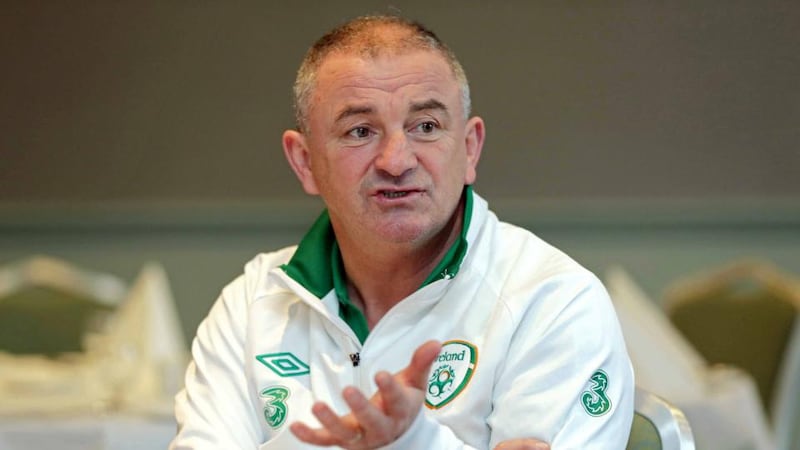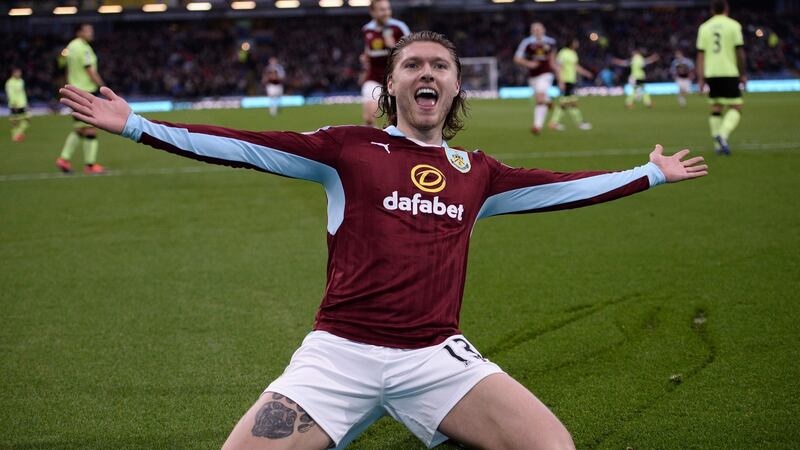It might all be overshadowed, one way or the other, by what happens to the senior team against Wales but so far, it has been a good week for the FAI with the Under-17 boys (and girls) qualifying for the European Championships.
They get a lot of stick, and sometimes they deserve it, but the association has done a lot of good work with our underage sides and you can see it in the results, the success Irish teams have had and the players they have helped to produce.
Under-21 level, though, continues to be a major problem and as that team prepares to kick-off their latest qualification campaign against Kosovo on Saturday, there seems to be little reason to suggest anything is going to change for the better on that front.
A lot has changed here in the underage club game over the last few years but, whatever the sceptics say, we are still producing players.
I’ve scouted for 30 years and when I walk out the door, heading to one of the 600 schoolboy fixtures each week, I still always believe there is a gem out there to be uncovered.
The new national leagues at under-17 and under-19 levels represent a major shift in power towards the League of Ireland clubs and the longer term transition towards developing our players at home rather than sending them away young continues.
The new national underage leagues have put League of Ireland clubs at the heart of the youth development system
I scouted for Aston Villa for 16 years and back then there were maybe 50 kids going to England each year. Now the figure might be 30, although the real difference is the clubs they are going to. Back then it was to all the big names. Now, you see kids going to sides in League Two: Stevenage, Cheltenham, Carlisle.
You might wonder whether it’s the best option, but you can’t blame them. They have an industry over there, and jobs to go with it. Wages are going back up here, and there are a few more players who can be considered properly full-time, but you couldn’t describe football in this country as an industry. All of our best players still look to “get away” in the end. The only real questions are when, and for how much?
A club like St Kevin's has a pretty straightforward business model; to bring promising players in, develop their potential and sell them to England. They've been very successful at it and though quite a few players go for peanuts initially, the pay-off comes when a player like Jeff Hendrick changes hands later for €10 million or more and you have a sell-on clause that might be worth up to 10 per cent.
New academy
It is no surprise that the League of Ireland clubs want a piece of that action and Shamrock Rovers have been the most vocal about their new academy.
Impressive as their new training ground might be, they probably have a long way to go before they can persuade the very best kids to stay here rather than head to a big English club. But they still think they can make it work.

They have been helped hugely by Dundalk’s success in Europe because Stephen Kenny’s side have brought respectability to the league and that is key when it comes to selling the players they develop.
It is not just Rovers, though. At Bohemians, we are heavily involved in recruiting from schoolboy teams and we see these players as the future of the club.
The new national underage leagues have put League of Ireland clubs at the heart of the youth development system but there are still issues that may have to be addressed as the system settles.
At the moment the few biggest schoolboy outfits constantly steal each others’ best players, but there are enough good ones to keep the top end of things competitive.
The competition for kids has its downside, though, with coaches wary of doing anything that would alienate a player who might then leave. The upshot has been that there has been a noticeable decline in the attitude of teenage prospects from the city, certainly by comparison with those from the rest of country where technical standards have been catching up fast.
Now there will be more clubs fighting over the kids, too many really because we might, as I say, be producing talented players but not enough elite ones to keep all of the clubs strong. You could see that last year when St Patrick’s Athletic beat Dundalk 11-2 at under-17 level.
Below that, there is a move in the association’s Player Development Plan towards removing the competitive element from the game. This reads like it was written in Disneyland and threatens to undermine one of the key characteristics our players tend to possess; their will to win. And above it there is the same problem developing kids that has existed in England: for many the “pathway” doesn’t actually lead anywhere.
At academies in England, players come out of Under-18 teams and if the club’s coaching staff aren’t convinced he can quickly establish himself as a member of the first team squad then the chances are he will be released.
Here, it will start to happen at Under-19 level. St Patrick’s are, again, a prime example. They have recruited really well over the last few years but we have seen very few of those players come through to the first team.
Major tournament
Through all of this, though, enough really good players tend to emerge each year – we only need 11 – and our national teams at Under-17 and Under-19 levels have consistently punched above their weight.
Identifying and supporting the best players at the earliest point possible has to be a priority. With that in mind it is surprising that the association has not put highly experienced coaches in charge of its youngest side. But the more obvious problem is with the Under-21s.
In almost every other country, the best players play at Under-21 level and when England looked a few years back at why the senior team wasn’t doing better, the fact that so many young players were skipping that level was seen a big issue.
Lads who have come up through the ranks can be overlooked so that an English-born guy in Everton's third team gets a cap
Here, the team has never qualified for a single major tournament and many of its results down the years have been appalling. A big part of the problem would appear to be the way in which the team is used to recruit players who might qualify for us.
Lads who have come up through the ranks can be overlooked so that an English -born guy in Everton’s third team gets a cap. That impacts on results and on the development of our best players.

Aside from being the manager, Noel King has the title at the FAI of Head of International Player Identification so I understand why he does it. But it seems to be me that there is a conflict there and the dual role is doing more harm than good.
The current squad seems to underline the point. The numbers don’t tell the full story but still, there are just five of 19 players born in the Republic with more than half born, bred and developed in England.
Personally, I’m delighted when a player born abroad declares for us. But is anyone seriously suggesting that all of these lads are better than the ones we have developed here?
Obviously I understand that the ‘bigger picture’ here is providing more options for the senior team manager a few years down the line. But it might be time that the FAI started to show a bit more confidence at this key level in the development of our players and the system it has been so central to shaping these past few years.
After a 20-year senior career that included spells at Shamrock Rovers, St Patrick’s Athletic, where he won the league, and Bohemians, Dave Henderson moved into coaching and scouting. He was the Aston Villa’s Academy Scout in Dublin for more than a decade before moving to Hibernian in Scotland. He is currently Head of Recruitment with Bohemians.












